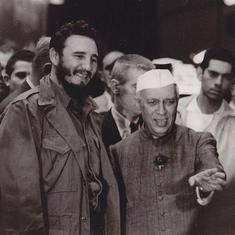For decades now, All India Radio has disseminated various aspects of state policy and continues to address citizens in its role as the government’s Akashvani (literally “voice from the skies” or a “celestial announcement”). Originally begun in the 1920s as an amateur effort, broadcasting in India took a definite shape with the establishment of privately run radio clubs at Bombay, Calcutta and Madras. But they soon closed down due to financial difficulties. It was only in July 1927 that broadcasting was formalised by the colonial government with the inauguration of the first station of the Indian Broadcasting Company in Bombay. In 1936, the nomenclature changed to All India Radio.
Since the early days, broadcasting in India included regular music programmes. At first presented as live broadcasts, music was later recorded and broadcasted at various times through the day. The first National Programme of Music was broadcast on July 20, 1952.
Realm of Sound Films Division
In 1954, the state-run Films Division of India made a short documentary that portrayed the diversity of programmes broadcast on All India Radio and the significance of broadcasting to the new sovereign nation. Showcasing various musical forms and systems, the film contains vignettes of Hindustani music performances that feature musicians like shehnai exponent Bismillah Khan, and sitar maestro Ravi Shankar and renowned sarod player Ali Akbar Khan in a duet accompanied by tabla player Kishan Maharaj, one of the foremost representatives of the Banaras gharana. The film ends with a short jhala or climactic rhythmic portion in raag Bhairavi performed by sitar virtuoso Rais Khan.
Though many of the recorded treasures from the All India Radio have been lost, we are fortunate that some archival recordings are now disseminated publicly.
Bade Ghulam Ali
Dadra
The famous Patiala gharana vocalist Bade Ghulam Ali sings a dadra, a form closely linked to the thumri genre. Set to Dadra taal, a cycle of six matras or time units, the composition is sung differently in some sections to accommodate rhythmic patterns called laggis played by the tabla player in Kaherva, an eight matra taal. Bade Ghulam Ali Khan in his characteristic style weaves short and incredibly swift melodic passages through the piece.
Begum Akhtar
Thumri
The next track features Begum Akhtar singing a thumri based on raag Pahadi set to Deepchandi, a fourteen matra taal.
Siddheshwari Devi
Tappa
Thumri exponent Siddheshwari Devi sings a tappa in raag Bhairavi. Composed by Shori Miyan, the piece is set to the Sitarkhani or Addha taal, a sixteen matra cycle. As is the nature of the tappa form and its compositional structure, one can hear intricate taans or fast melodic sequences that seem to halt in their tracks in unpredictable ways only to resume their journey to meet the main line of the composition or to set off new taan sequences.
When a Voice from the Skies brought Hindustani music to Indian homes
Gems from Bade Ghulam Ali, Begum Akhtar and Siddheshwari Devi.










